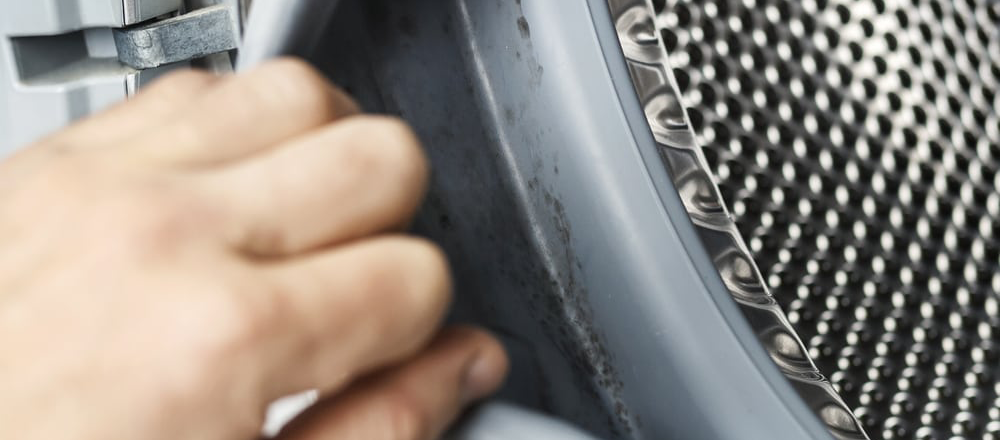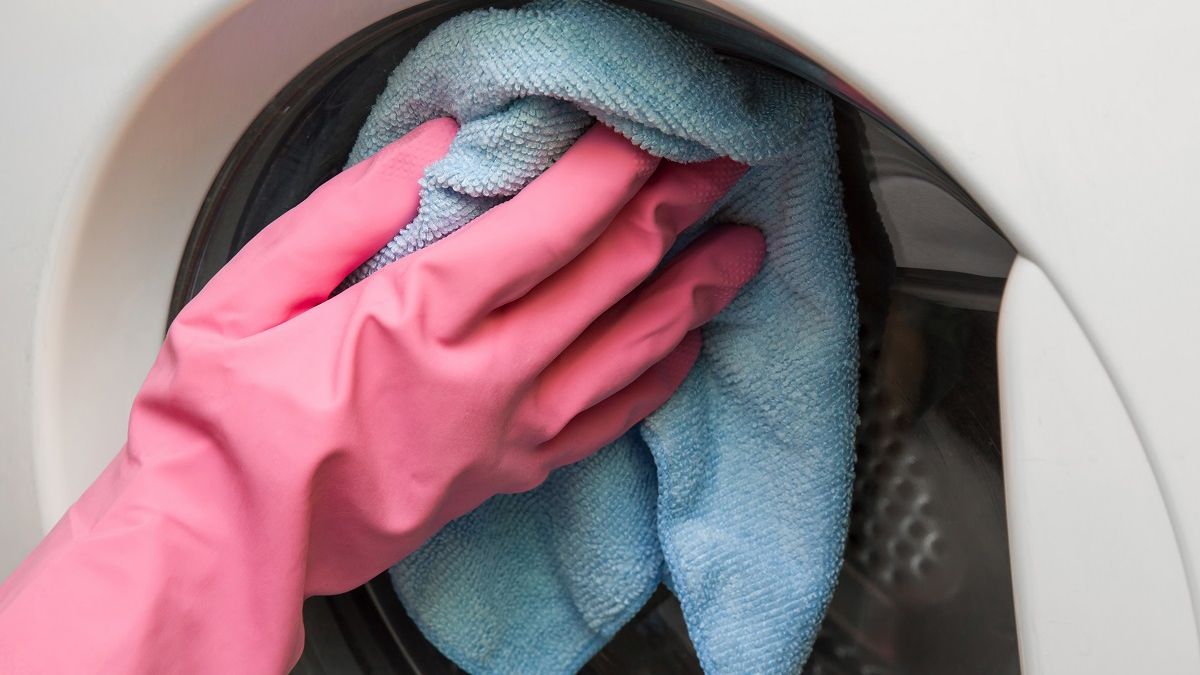
Washing machine mould is a common household problem. This kind of mould is caused by neglecting to clean the machine and/or using it improperly. But here’s the good news – washing machine mould is easy to clean as it’s usually found on the rubber gasket of its door (if the machine is front-loading).
However, even though a washing machine cleans laundry, this doesn’t mean it cleans itself. Mould feeds on the moisture and detergent residue the machine produces. Here’s how to remove mould from washing machines and how to prevent it.
How to Get Rid of Mould from Washing Machines
- A commercial mildew cleaner or a homemade mixture can be used. Here are examples of homemade cleaners:
- 2 cups water, ½ cup hydrogen peroxide, and ¼ cup lemon juice. Hydrogen peroxide and lemon juice are effective cleaners that combat mould and inhibit its growth.
- 2 cups water, ¼ cup lemon juice, and ½ cup distilled white vinegar. White vinegar is an all-around cleaner which can be used instead of hydrogen peroxide.
- 1-part vinegar and 4 parts water. Just vinegar and water can do the trick if the mould growth in the washer gasket is in scarce amounts.
- 1-part bleach and 4 parts water. Using bleach is fine if the above-mentioned natural cleaners didn’t work.
- The preferred cleaner should be added into a spray bottle and misted over the mould on the gasket. Those who attempt mould cleaning should wear rubber gloves to protect their hands and a dust mask to avoid inhaling mould spores. Then, a cloth and an old toothbrush can be used to clean the gasket thoroughly. For persistent spots, the solution can be allowed to sit for a few more minutes.
- Once the rubber seal is clean, it’s time to purify the drum and hoses. That can be done by running a cycle on the hottest setting with the preferred mould remover. This will rinse out any mould traces and odours from the washer drum and hoses.
- If a musty smell persists, there may be mould growing behind the washer drum. A qualified repair person or the manufacturer should be called (if the machine is under warranty). They can diagnose the washer and fix the mould problem.
How to Prevent Mould in Washing Machines
- Only the right detergent (in the correct amount) should be used. For example, homeowners who have a High-Efficiency (HE) washer must use High-Efficiency detergent. Non-HE detergent leaves behind too many suds that promote mould growth.
- The door should be left open after each wash to allow moisture inside the machine to escape, preventing the formation of a damp environment in which mould can grow.
- Wet clothes must be removed right after a wash. Not only does this prevent moisture and mould buildup, but it also prevents clothes from smelling musty.
- The door gasket should be wiped with mildew cleaner regularly at least once a week to eliminate moisture and detergent residue that promote mould growth.
- Using a dehumidifier in the laundry room is also a good idea. Humidity from outside the machine may contribute to the mould inside it, so it’s important to fix the water or humidity problem.
Washers are not the only appliances that are prone to water damage. Here’s how to protect appliances from water damage, as well as fires. The PuroClean team stands ready to provide professional restoration services to any property affected by fire, water or mould damage.
April 12, 2019

